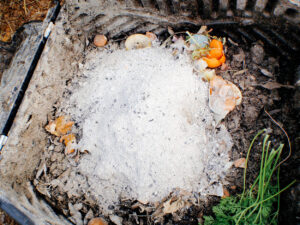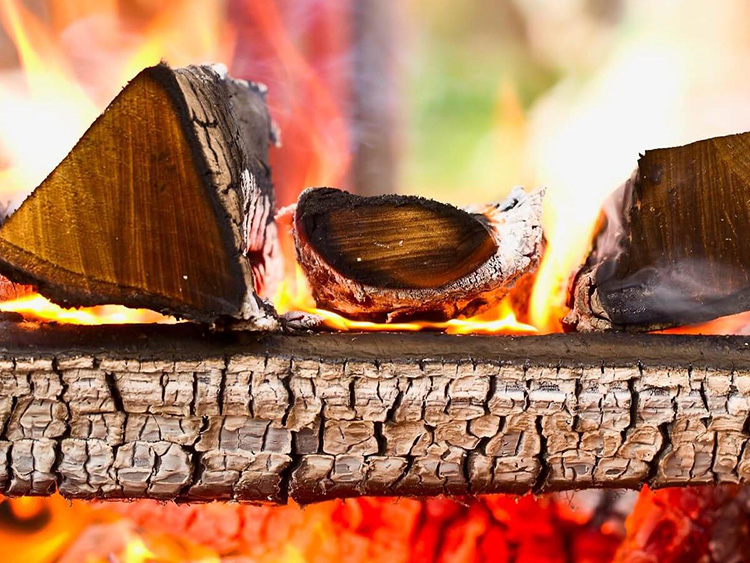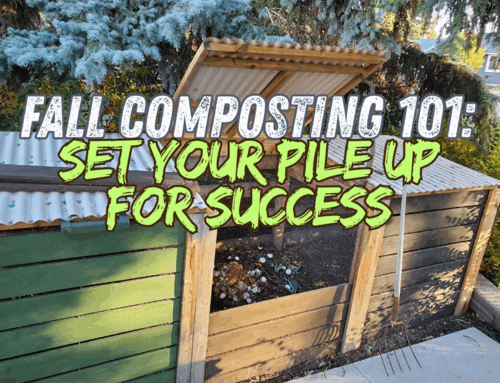Using Ash in the Garden: A Natural Fertilizer and Soil Enhancer
by Brett Kerley
If you have a fireplace, wood burning stove or outdoor fire pit, you might have a lot of wood ash on your hands. Ash, particularly wood ash, has been used as a garden amendment for centuries. Its benefits are well-documented. Gardeners across the world use it to improve soil health, deter pests, and provide essential nutrients to plants. But, while ash can be an effective addition to your gardening toolbox, it’s important to use it thoughtfully to avoid any potential problems.
What is Ash
 When wood or other organic matter burns, the remaining material is ash. It consists primarily of minerals that were once part of the original material. Wood ash is the most common form of ash used in gardening. Ash from other plant materials, such as straw or leaves, can also be beneficial. The composition varies depending on the source, but typically contains potassium, calcium, magnesium, phosphorus, and trace elements. All are valuable for plant growth.
When wood or other organic matter burns, the remaining material is ash. It consists primarily of minerals that were once part of the original material. Wood ash is the most common form of ash used in gardening. Ash from other plant materials, such as straw or leaves, can also be beneficial. The composition varies depending on the source, but typically contains potassium, calcium, magnesium, phosphorus, and trace elements. All are valuable for plant growth.
Benefits of Using Ash in the Garden
- Soil pH Adjustment (Alkalinity)
Ash is alkaline. It can raise the pH of acidic soils, making it ideal amending overly acidic (sour) soils. This can be particularly useful in areas of your yard that are naturally acidic or when growing plants that prefer a more neutral or slightly alkaline environment. However, it’s important to note that excessive use of ash can make the soil too alkaline, which can harm plants that thrive in acidic conditions. Blueberries (Vaccinium), White dogwood (Cornus alba), and other acid-loving plants should be avoided when using ash to correct soil pH. Instead, apply it to vegetables like tomatoes, peppers, and cabbage, which prefer neutral to slightly alkaline soil. - Improved Soil Fertility
Ash is rich in several key nutrients essential for plant health. The main ones include:- Potassium (K): Essential for overall plant health, potassium aids in photosynthesis, water regulation, and disease resistance.
- Calcium (Ca): Important for building strong cell walls and helping plants resist diseases such as blossom end rot (commonly seen in tomatoes and peppers).
- Phosphorus (P): Vital for root development, flowering, and fruiting, phosphorus supports strong plant growth.
- Magnesium (Mg): Helps with photosynthesis and improves the green color of plants by aiding in chlorophyll production.
- Pest Deterrent
A layer of ash can help deter slugs, snails, and other crawling pests. The sharp particles of ash irritate the soft bodies of these creatures, causing them to avoid the areas where it’s applied. In fact, gardeners often sprinkle ash around the bases of plants, particularly vegetables and fruit trees, to keep pests at bay. - Improved Drainage
Ash can help improve soil structure, particularly in heavy, clayey soils. When added to such soils, ash can help to increase aeration, improving drainage and root penetration. This can be especially beneficial for plants that require well-drained soil. - Promotes Beneficial Microbial Activity
Ash can also benefit the soil’s microbial community. While it’s not a complete replacement for organic compost, the minerals in wood ash can foster the growth of beneficial soil organisms, like earthworms, that help to decompose organic matter and create healthy, fertile soil.
How to Use Ash in the Garden
- Test Your Soil First
I cannot stress this enough. Before adding ash to your garden, it’s important to test your soil’s pH. If your soil is already alkaline, adding ash could worsen the imbalance. A pH test kit, available at garden centres or online, can help you determine if your soil could benefit from an application of ash. - Apply Sparingly
Ash is rich in nutrients, so it’s important not to overdo it. A light dusting or a thin layer is often all that’s needed. Too much ash can raise the soil’s pH too much, which can hinder plant growth by making certain nutrients less available. As a general rule, apply about 10-15 lbs (5-7kg) of ash per 1,000 square feet (93mof garden space. For smaller applications, start with a cup or two spread around individual plants. I find it’s always better to start with less and add more if necessary. - Incorporate into the Soil
For the best results, mix the ash into the soil rather than leaving it on the surface. This helps the nutrients be better absorbed by the plant roots. When using ash around trees or large plants, ensure that it is spread evenly and watered in.
- Use It in Composting
Yes, you can! I’ve been asked this question many times. It helps to balance the acidity in compost, especially if you add a lot of green, nitrogen-rich materials. However, don’t add too much, as it can slow down the composting process if it raises the pH too much. - Use in Specific Planting Areas
When planting vegetables that prefer more alkaline conditions (such as tomatoes, cabbage, or broccoli), sprinkle some wood ash in the planting hole or around the root zone. For acid-loving plants like blueberries or azaleas, however, avoid using ash, as they require acidic conditions.
Precautions When Using Ash
- Don’t Use Ash from Treated Wood or Charcoal
Only use ash from untreated wood. Ash from painted, stained, or pressure-treated wood may contain harmful chemicals. Charcoal ash from barbecues can contain additives that are not suitable for plants. - Avoid Over-Application
Since wood ash is alkaline, too much can raise the soil’s pH to the point where it harms plants that prefer more acidic soils. Always start with small amounts, and observe how your plants respond before applying more. - Wear Protective Gear
Ash is fine and dusty, so wear gloves and a dust mask when handling it to help prevent skin irritation and respiratory issues. If the ash is being applied in large quantities, it’s especially important to avoid inhaling the dust. - Store Ash Properly
Store your wood ash in a dry, covered container to prevent it from blowing away and to keep it from becoming contaminated with moisture or other debris. You can also let it sit for a few weeks to “cure” before applying it, which can reduce its immediate alkalinity. - Safety with Wood Ash
Do not mix ash with nitrogen fertilizers such as ammonium sulfate (21-0-0-24S), urea (46-0-0) or ammonium nitrate (34-0-0). These fertilizers produce ammonia gas when placed in contact with high pH materials such as wood ash.
Final Thoughts
Wood ash is a versatile, natural resource that can benefit many aspects of your garden. When used in moderation and with care, it can improve soil health, increase plant productivity, and deter pests. Whether you’re adjusting the pH of your soil, adding nutrients to your compost, or looking for a natural pest control solution, ash is a valuable tool for the eco-conscious gardener. Just remember, moderation is key, and always monitor your soil’s health to avoid over-application.
Happy gardening everyone!
















